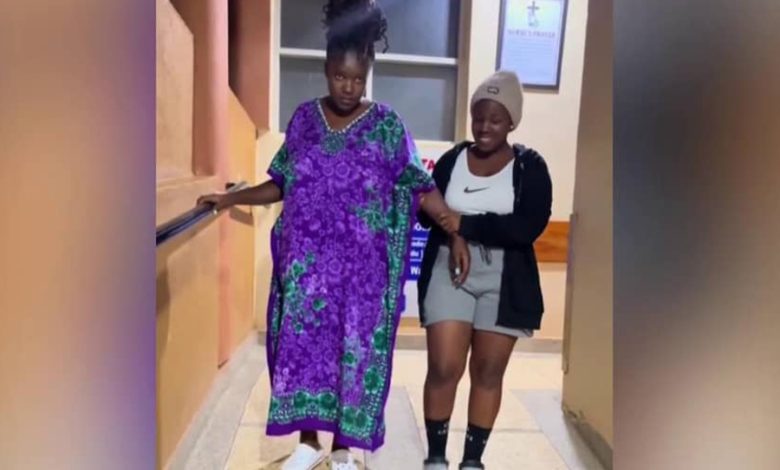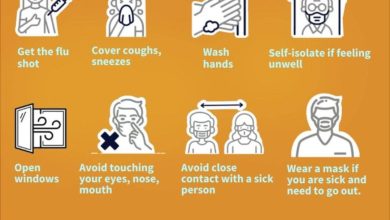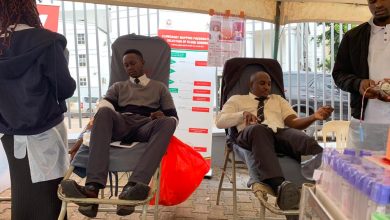The Hidden Burden of Fibroids: A Woman’s Silent Struggle

Health
Joy Turamuhawe, a 27-year-old woman living in the bustling streets of Kampala, Uganda, embodies the untold struggles of millions of women worldwide.
Her experience with a uterine fibroid turned daily life into a delicate balance between work and her health, forcing her to endure silently.
Beneath her seemingly normal routine lay a hidden burden—painful and debilitating effects of a condition few openly acknowledge.
One day, during a routine checkup, Joy was informed she had a large fibroid and would need surgery to manage its effects.
At first, she thought it was a normal part of being a woman, assuming it was the price many paid for fertility. With little understanding of the condition, she brushed it off.
Over time, her discomfort escalated—she found herself needing the bathroom every two hours, and even simple tasks became a struggle.
The Stigma of Women’s Health
In Uganda, as in many other societies, reproductive health issues often remain shrouded in silence.
Discussions about menstrual health are deemed inappropriate, making it difficult to seek help. Joy experienced this firsthand. She told herself that her role as a woman was more significant than her suffering.
Besides, who could she confide in? She dismissed her pain as a natural part of womanhood.
As her condition worsened, Joy’s productivity at work declined. Chronic exhaustion and frequent bathroom trips disrupted her life.
When she finally opened up to friends, she was shocked to learn that some of them had similar experiences.
Yet, none had sought medical help, bound by societal expectations to endure in silence, without complaint, and without appearing weak.
It wasn’t until her symptoms began interfering with work that Joy sought medical attention. A scan confirmed she had uterine fibroids—a term she had never heard before.
“Fibroids are non-cancerous growths that develop in the uterus,” her doctor explained. They are particularly common among African women, with up to 80% affected by the age of 50.
Joy realized she had been living with the condition for years without knowing its name. As the doctor outlined treatment options—ranging from medication to surgery—Joy’s thoughts raced.
How could something so debilitating be so common yet so rarely discussed? Why had she, and so many women like her, been left to suffer in silence?
The Cost of Silence
Joy’s experience highlighted the intersection of gender, culture, and healthcare access. In a society where women’s health issues are often ignored and reproductive health is treated as a taboo subject, many women endure fibroids without seeking treatment.
The problem is even more severe in rural areas, where healthcare resources are scarce, and awareness of conditions like fibroids is minimal.
The impact of fibroids extends beyond individual health. Women like Joy face challenges at work, struggle to maintain household responsibilities, and grapple with the psychological toll of their condition.
The burden is not just physical but deeply emotional and societal.
Receiving a diagnosis was a turning point for Joy. Determined to break the silence, she began sharing her experience on social media platforms like TikTok.
These discussions revealed the power of awareness and community. Women encouraged one another to seek medical attention, challenging cultural norms that had kept them silent for so long.
Joy eventually underwent surgery to remove her fibroid with the support of her family. Her health improved, but her journey didn’t end there.
She became an advocate for reproductive health education, urging women to seek timely medical care. Her voice joined a growing movement calling for better access to healthcare and greater awareness of fibroids.
Joy’s story is not unique. Thousands of women in Uganda face similar challenges, often unaware of what fibroids are.
This health crisis, seldom discussed, affects every aspect of life—from physical well-being to financial stability. A lack of knowledge, the stigma surrounding women’s health, and gaps in healthcare systems exacerbate the problem.
Dr. Steven Ssematimba, a gynecologist at Crystal Medical Center, explains that fibroids are often asymptomatic and can only be diagnosed with a scan.
He notes that treatment options depend on factors like a woman’s age and symptoms.
However, treating symptoms alone does not always address the fibroids themselves.
“Symptoms can be managed, often as a temporary measure while preparing for surgery,” he says.
Dr. Suzan Atuhairwe, a gynecologist at Mulago Specialized Women and Neonatal Hospital, highlights another challenge: many women delay seeking treatment, relying instead on herbal remedies, which can do more harm than good.
“By the time they come to us, fibroids have often grown significantly. Surgery can be expensive, and many women hesitate due to fear or financial constraints,” she explains.
Naturopathic therapists, like Dr. Richard Ssenjobe of Biva Organic, argue that alternative treatments can help, but gynecologists caution that surgery is often the most effective option.
Breaking Myths and Building Awareness
Myths and misconceptions about fibroids persist, particularly in communities where reproductive health is poorly understood.
Although the exact causes of fibroids remain unknown, experts stress the importance of early detection and regular medical checkups. If left untreated, fibroids can, in rare cases, lead to complications such as cancer.
According to the Centers for Disease Control and Prevention, 70–80% of women worldwide will develop fibroids by age 50.
In Africa, fibroids disproportionately affect Black women, with up to 40% of women in their 30s affected. Studies in Uganda confirm that women in their 30s, particularly those without children, are most at risk.
Joy’s story underscores the urgent need for awareness, education, and improved healthcare access. By speaking out, she has inspired other women to prioritize their health and break the silence surrounding fibroids.




